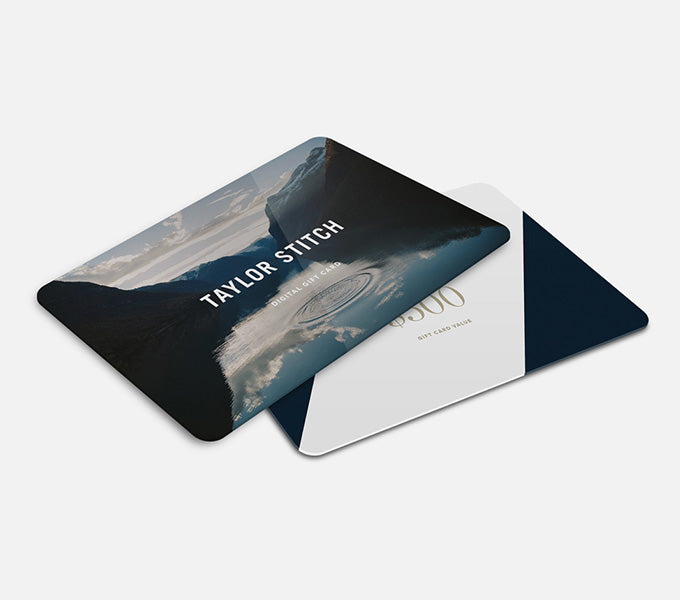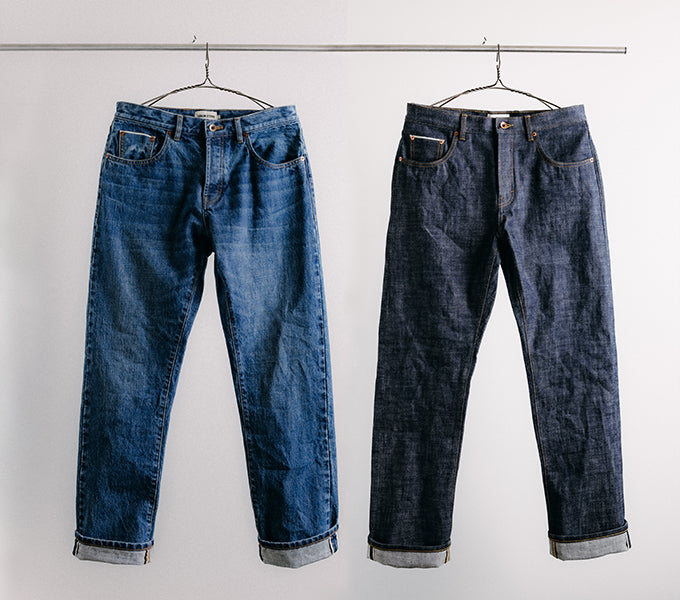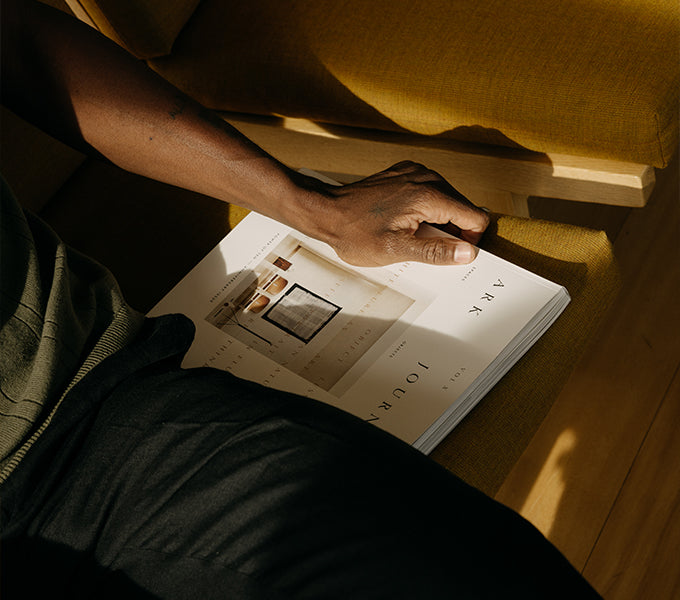Whether you’re a menswear enthusiast or a guy who barely thinks twice about his appearance, you’ve probably got a few t-shirts in your wardrobe. They are an indisputable staple of our wardrobes, underpinning our daily outfits. So, what makes the perfect t-shirt? What kind of tees are out there? Which one should you buy? And what’s the best way to style a tee shirt? The answers to these questions and more lie ahead: welcome to The Definitive TS Tee Guide.
A Brief History
Technically, the first tee shirts were underwear. Getting their name from the distinctive “T” shape formed by the boxy body with two sleeves sewn on, these 19th-century undergarments covered the entire body. They were intended to be a protective barrier between the sweat and grime of the wearer’s skin and the more expensive clothing worn for fashion.
The first instance of the tee shirt as we know it wouldn’t come around until the Industrial Revolution when factory workers were issued two-piece union suits consisting of a “tee shirt” top and a pair of durable trousers. Working in hot, sweaty conditions, laborers began stripping down to their tee shirts and pants to get through the work day.
By the early 19th century, the American military began issuing cotton undershirts to soldiers and sailors, who, like the laborers before them, often favored wearing the tee shirts by themselves. Soldiers returning from the war continued wearing their comfortable “pants and a tee shirt” outfit to do lawn work or wrench it out in the garage, and soon, the style caught on with the younger generation as a functional, casual outfit that stood out from the stuffy styles of their parent’s generation.
Finally, in the 1960s, film stars like Marlon Brando, James Dean, and Steve McQueen would cement the tee shirt as a symbol of youth and rebellion, turning what was once considered an unsightly undergarment into a bonafide style icon.

What Makes A Great T-Shirt?
While the tee shirt has come a long way since its inception, technological advancements in the clothing industry have benefited the style while others have diminished it. Skin-tight fits, stretchy fabrics, plunging necklines, and all nature of atrocities have become standard practice. So, what should you look for to ensure you invest in a quality tee shirt that will look great and last you for years? The two main points to understand are fabric and fit. Let’s go over both.
What Material is Best For Tee Shirts?
It depends on what you’re looking for. If you want to get as close as possible to the men's tees that Brando and Dean wore, go for cotton.
A 100% cotton t-shirt will develop character as it ages, softening and shaping to your body. If a cotton tee rips, it’s easy to repair, and when it finally reaches the end of its life, a cotton tee will completely biodegrade in less than five months.
While cotton isn’t the only fabric used in high-quality tee shirts, a good rule of thumb is sticking to natural fabrics or fabrics with a natural drape and feel. Synthetic blends have their benefits, but anything 100% synthetic is probably best suited for the gym.
How Should a Tee Shirt Fit?
While personal preference and body type play a role in how your tee shirt should fit, one thing that should not factor into your purchase decision is the extreme fit styles propagated by passing trends. Sure, a huge, oversized tee shirt may be “on trend” for a few months—maybe a year—but once that trend inevitably goes out of style, you’ll be left with a closet full of ill-fitting clothes destined for the landfill. As anyone old enough to remember the popularity of skin-tight tee shirts, deep scoop necks, and curved hems should know—trends fade, but classics never die.

Not Too Tight, Not Too Loose
For a timeless look, opt for a tee shirt that’s not too tight or too loose. If your t-shirt is pulling around your armpits or chest. It should drape close to the skin without being stretched against it. Nobody wants to look like a stuffed sausage.
By that same token, if your tee is too big, it will drape shapelessly and make your arms and chest look smaller.
If you are a fit person, go for a slightly trimmer fit, and if you’ve got some extra pounds, choose something slightly bigger, but in both cases, the aforementioned guidelines should be considered.
Length
As far as length is concerned, a tee should hit just below the waist. If it hits at or above your belt line, you’ll be showing your midriff every time you reach up or bend over, and if it drapes halfway down your thigh, you’ll look like you’re wearing a dressing gown. For a perfect fit, the hem should land about three or four inches below your belt.
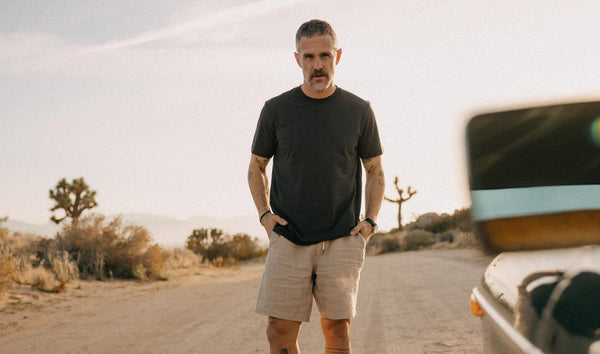
Shoulders & Sleeves
The shoulder seams of your tee shirt should land right on the slope of your shoulder. Too close to your neck, and you’ll get an awkward “cap sleeve” effect; too far down your arm, and you risk getting into “oversized” territory.
For a timeless, classic fit, your sleeves should hit about mid-way down your upper arm. However, an inch closer to your shoulder or elbow isn’t a cardinal sin, so apply personal preference here.
T-Shirt Weights Explained
“Garment weight” refers to the GSM (grams per square meter) of the fabric from which an article of clothing is made. Higher GSM materials tend to have a tighter weave or to be woven from thicker yarn, whereas lighter garment weights indicate looser, more open weaves or finer yarns. While GSM is the global standard, we measure garment weight in ounces in the US, so that’s how we will refer to it moving forward.
The old-school tees of laborers and soldiers were heavier than your average modern tee. They were made from 100% cotton jersey fabric with enough structure to drape in a flattering way without being too rigid—likely 7-8 oz.
With all of the advancements in the textile industry since then, we now have access to high-quality tee shirts in various garment weights. So which weight is right for you?
In general, heavyweight t-shirts are an excellent option for hard labor or dirty jobs. Over years of use and abuse, the hefty fabric will wear in and soften without becoming threadbare too quickly. For heavyweight options, look for garment weights of 7-oz and above.

For everyday use, a mid-weight tee is the perfect choice. You can rock them solo in the summer or layer them under a jacket in fall, winter, and spring. For that ideal Goldilocks weight, look for tee shirts around the 5 to 6-oz mark.
If you’re looking for a tee with a breezy, cool feel, or you naturally run a little hotter, opt for a lightweight tee or merino wool t-shirt. Remember that lightweight tees naturally have less structure, so the fit suggestions from earlier are doubly important. If it is too tight, the tee will cling to your skin and accentuate all the wrong areas. Too big, and they will look sloppy. Anything under 5-oz. is considered a lightweight tee.
Our Tee Selection
We’ve spent years pouring over vintage finds and archival photos to develop our tee selection. The fit is modeled after the classics worn by Brando, McQueen, and Mr. Dean, and the materials are of the highest quality available.
If it’s your first time diving into our roster of tees, the breadth of options can be a little bewildering. So here’s a handy guide to understanding each of our options and why you may want to add them to your daily rotation.
The Cotton Hemp Tee
Our lightweight offering, The Cotton Hemp Tee offers a breezy, weightless feel that’s perfect for hot days or activities that make you sweat. And since hemp is four times stronger than cotton, these hemp t-shirts punch above their weight class in the durability department.
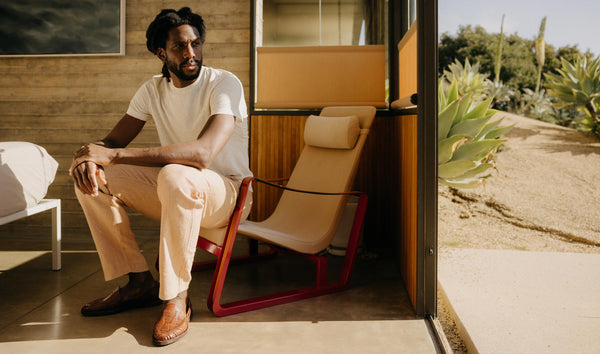
The Organic Cotton Tee
A perfectly balanced midweight tee, The Organic Cotton Tee offers that clean, slightly structured look and feel we associate with the classics. Crafted from 100% organic cotton with a substantial ribbed neckline, these are the tees we reach for on the daily.

The Organic Cotton Shop Tee
An old-school heavyweight work tee rendered in a richly textured rib-stitch finish, The Organic Cotton Shop Tee is (as the name suggests) woven from 100% organic cotton for a soft hand feel that gets better with every wear. Offering a timeless, tailored fit with natural stretch for comfort and mobility, this one stays on hand no matter what the day has in store.
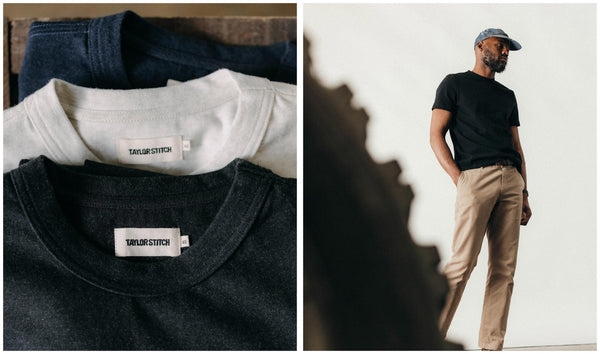
The Heavy Bag Tee
An old-school heavyweight tee with significant updates in environmental responsibility, The Heavy Bag Tee is woven from 100% upcycled and recycled yarns. Offering a hefty, slightly textured hand feel with more pronounced structure, our Heavy Bag offerings are built to take a beating and get softer with each wash and wear.

The Merino Tee
Merino wool is the granddaddy of all performance fabrics. On top of their buttery soft feel, our merino wool t-shirts wick sweat, regulate body temperature, and are naturally antimicrobial, making them the perfect base layer for outdoor adventure.

How To Style Your Tees
Part of what makes tee shirts such an indispensable asset in our wardrobes is their versatility. From a morning hike to a day on the town or an evening in the garage, tee shirts are welcome just about everywhere. That being said, we have our favorite ways to style them. Here are some of our favorite garments to pair with tee shirts.

Denim
Do we even need to say this one? A tee shirt and a pair of jeans go together like peanut butter and jelly. For best results, snag a solid pair of selvedge denim and pair it with sneakers or boots.
Workwear
A pairing nearly as old as the tee shirt itself, wearing your tee with classic workwear items harkens back to the laborers that first popularized the style. On top of practical benefits like protecting your flannel shirts from sweat and body odor, the natural drape of a tee shirt contrasts perfectly with the more rigid look of workwear garments.

High/Low
For a look that’s both relaxed and put together, try layering your tee shirt under a more casual sport coat or an unbuttoned oxford shirt. If you want your outfit to be more casual, pair it with chinos and sneakers. For a smart casual look, opt for wool pants and a loafer.
It’s official—you are now a certified tee shirt aficionado. We hope this guide will help you make more informed decisions down the line, decisions that are better for the planet and your wardrobe. Here’s to heralding in a new era of timeless, well-built basics. Cheers.

